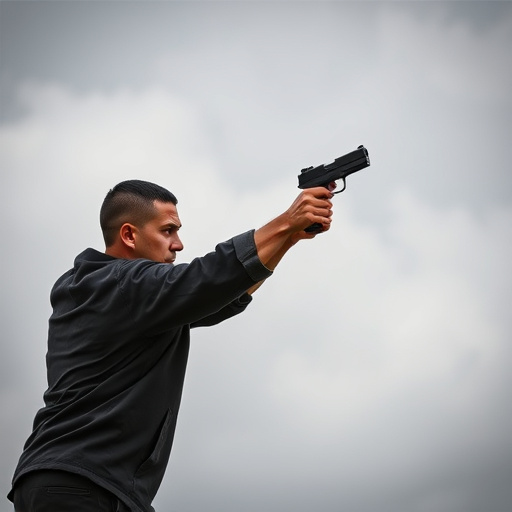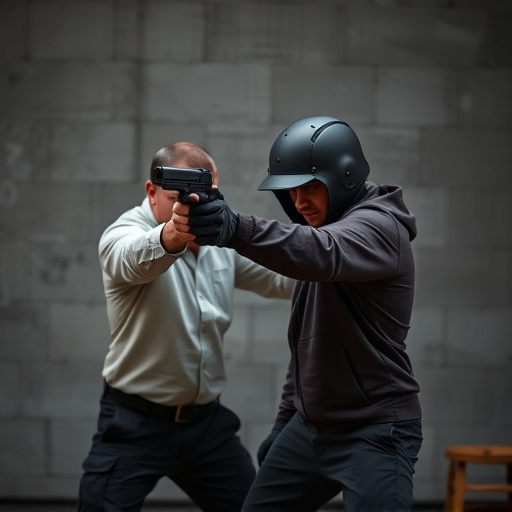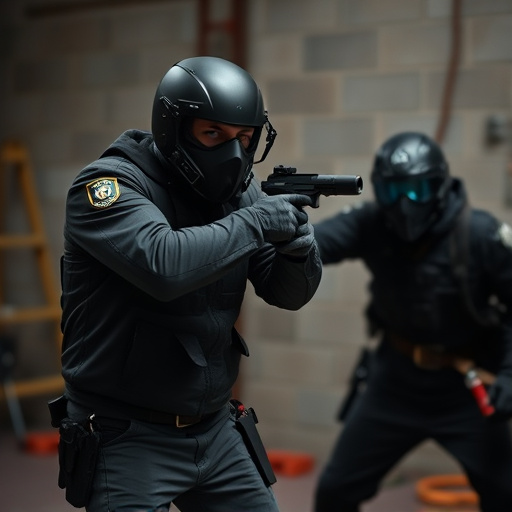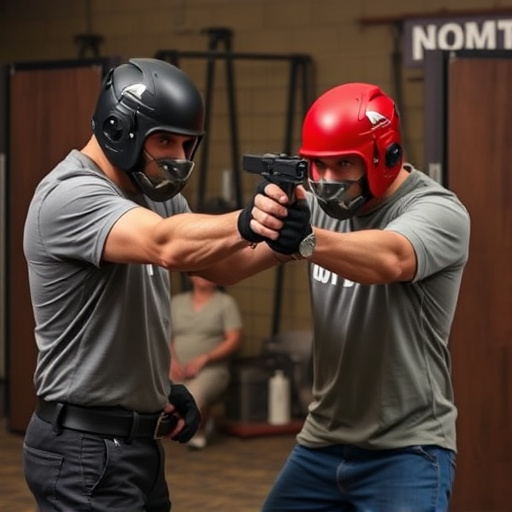The concealed stun gun flashlight combo's effectiveness hinges on precise electrode spacing, balancing surface area contact and current flow for optimal shock delivery. Strategically designed to maximize efficiency, these combos offer both a high-lumen light source and powerful stun functionality in one compact device. By maintaining a 1-2 inch (2.5-5 cm) distance between electrodes and strategically placing them near key areas like the jawline or back, users can temporarily incapacitate targets while minimizing energy waste and ensuring personal safety.
“Uncover the secrets behind maximizing the power of your self-defense tool—the concealed stun gun flashlight combo. In this comprehensive guide, we explore the critical aspect of electrode spacing in stun devices. Understanding how electrode placement influences the effectiveness of these powerful tools is key to ensuring personal safety. From the fundamentals of electrode spacing to best practices for optimal deployment, this article equips you with knowledge to enhance the impact of your concealed stun gun flashlight combo.”
- Understanding Electrode Spacing in Stun Devices
- The Role of Concealed Stun Gun Flashlight Combos
- Optimizing Effectiveness: Best Practices for Electrode Placement
Understanding Electrode Spacing in Stun Devices

Electrode spacing in stun devices, such as a concealed stun gun flashlight combo, is a critical factor in determining its effectiveness. The electrodes are responsible for delivering an electric current to the target, and their arrangement ensures precise and powerful shock delivery. A well-designed electrode system should consider the balance between surface area contact and current flow, aiming to maximize both for optimal stun performance.
In a concealed stun gun flashlight combo, electrode spacing is optimized to accommodate the dual functionality of a stun device and a source of illumination. The proximity of electrodes in relation to each other ensures that when the user activates the stun function, the electric current flows efficiently through the target’s body, disrupting muscular control and rendering them temporarily incapacitated. This technology underscores the importance of thoughtful design in enhancing personal safety tools like concealed stun guns.
The Role of Concealed Stun Gun Flashlight Combos

In today’s digital era, where personal safety is a paramount concern, concealed stun gun flashlight combos have emerged as versatile and potent tools for self-defense. These innovative devices combine the power of a stun gun with the functionality of a high-lumen flashlight, offering users an added layer of protection during unexpected encounters. The strategic placement of electrodes on these combos ensures maximum effectiveness when deployed, allowing individuals to disable attackers while illuminating their surroundings.
The concealed nature of these devices is particularly appealing, as they seamlessly integrate into everyday carry items like flashlights or even keychains, making them easily accessible yet discreet. This stealthy approach is ideal for those seeking non-lethal means of self-defense in various settings, from late-night walks to outdoor adventures, where both a light source and a stun gun are beneficial.
Optimizing Effectiveness: Best Practices for Electrode Placement

Optimizing the effectiveness of a stun gun, such as those found in concealed stun gun flashlight combos, heavily relies on proper electrode placement. The distance between the electrodes plays a significant role in delivering an optimal shock. Typically, maintaining a spacing of 1-2 inches (2.5-5 cm) between the electrodes is recommended for most devices. This ensures that the current flows smoothly and efficiently through the target’s body, maximizing the stun effect while minimizing energy waste.
Best practices dictate that electrodes should be positioned to align with the nervous system and major muscle groups. For front-facing electrodes, aiming for a spot just below the jawline or at the temple area is ideal. Rear-mounted electrodes, as seen in some concealed stun gun flashlights, should be placed near the small of the back, where the spine’s electrical activity is concentrated. Proper placement ensures that the shock disrupts the target’s neuromuscular system, rendering them immobile without causing significant injury.
In conclusion, optimizing electrode spacing in stun devices, particularly within concealed stun gun flashlight combos, is paramount for maximizing effectiveness. By understanding the role of electrode placement and following best practices, users can ensure their stun weapons deliver a powerful and reliable stun. This knowledge is crucial for personal safety, as it enables individuals to defend themselves with confidence in various situations.
